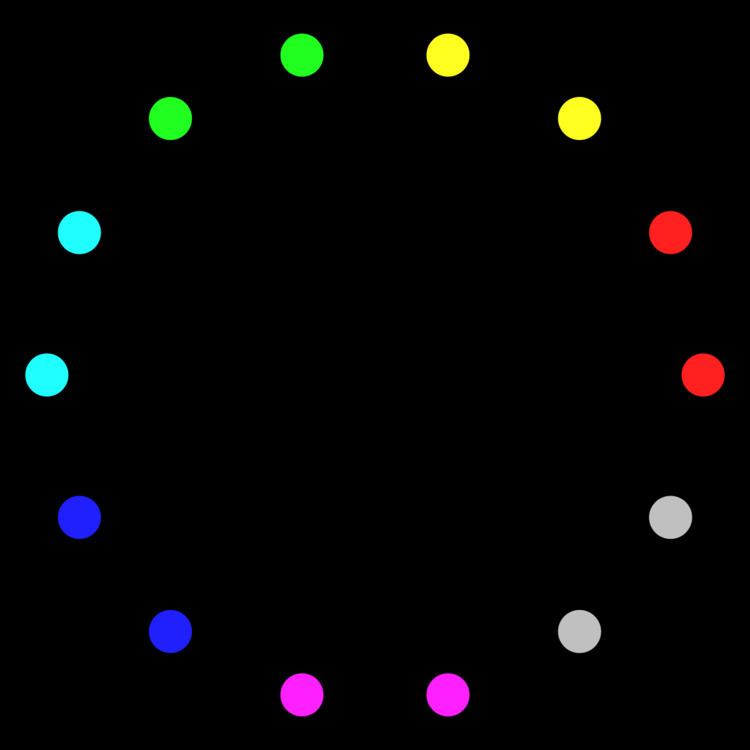 | ||
In graph theory, an exact coloring is a (proper) vertex coloring in which every pair of colors appears on exactly one pair of adjacent vertices. That is, it is a partition of the vertices of the graph into disjoint independent sets such that, for each pair of distinct independent sets in the partition, there is exactly one edge with endpoints in each set.
Contents
Complete graphs, detachments, and Euler tours
Every n-vertex complete graph Kn has an exact coloring with n colors, obtained by giving each vertex a distinct color. Every graph with an n-color exact coloring may be obtained as a detachment of a complete graph, a graph obtained from the complete graph by splitting each vertex into an independent set and reconnecting each edge incident to the vertex to exactly one of the members of the corresponding independent set.
When k is an odd number, A path or cycle with
Related types of coloring
Exact colorings are closely related to harmonious colorings (colorings in which each pair of colors appears at most once) and complete colorings (colorings in which each pair of colors appears at least once). Clearly, an exact coloring is a coloring that is both harmonious and complete. A graph G with n vertices and m edges has a harmonious k-coloring if and only if
Computational complexity
It is NP-complete to determine whether a given graph has an exact coloring, even in the case that the graph is a tree. However, the problem may be solved in polynomial time for trees of bounded degree.
